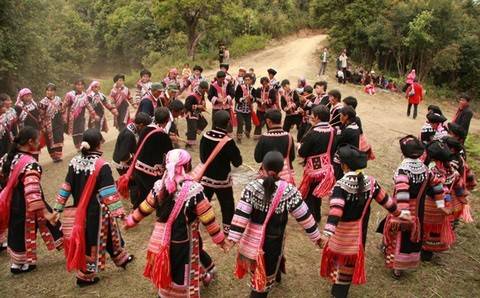Lahu people(Part 2)
Language Main article: Lahu language The Lahu language is part of the Loloish branch of the Lolo–Burmese subgroup of the Tibeto-Burman family (itself a member of the Sino-Tibetan language family). Like most of its relatives, it is a strongly isolating language with subject–object–verb word order, and a set of numeral classifiers. There are seven tones, and consonants cannot close syllables. The language spoken by the Lahu Shi is notably divergent from that spoken by the other groups. In Thailand, Lahu Na often serves as a lingua franca among the various hill tribes. Written Lahu uses the Latin alphabet. Among Christian villages, the language has been enriched by loanwords from English, Latin and Greek via Bible translation, plus neologisms in the areas of hygiene, music and education. Religion An elderly Lahu woman at a refugee camp in Thailand The traditional Lahu religion is polytheistic. Buddhism was introduced in the late 17th century and became widespread. Many Lahu people in China are Buddhists. Christianity became established in Burma in the 19th century and has been spreading since. The Lahu of Northeastern Thailand had encounters with Theravada Buddhist forest monks (tudong monks) around the years 1930–1940. The leader of such a group of monks, Mun Bhuridatta, spent some time in Lahu territory. These Lahu asked him for a "gatha that would protect them from ghosts and demons." Names Lahu people used to have just a given name, until the Chinese Government gave them surnames. About 90% of the Lahu people are either named Lee or Zhang, two of the most common Chinese surnames. Lahu given names are made of two syllables: one that shows the gender and one that gives information on the day of birth, based on the zodiac. For example, a person born on the Ox day will be named “Zanu” if he is a boy and “Nanu” if she is a girl.
